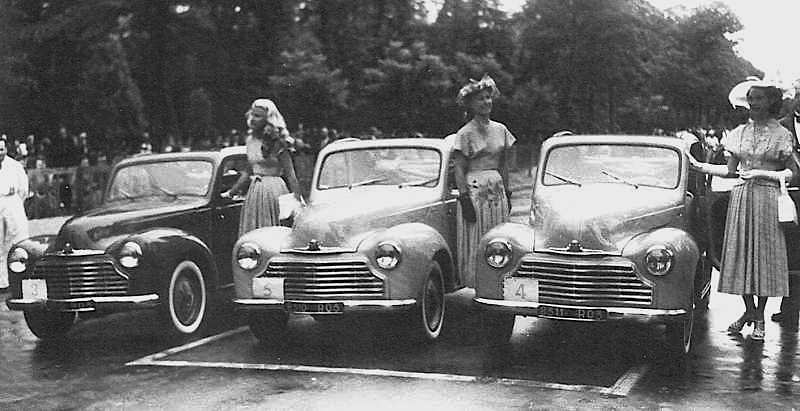Some French carrossiers such as Chapron, Franay, and Faget & Varnet continued pre-war styling themes on Delahayes during the first few years after World War 2, but Guilloré was one of the firms that attempted contemporary styling. This often did not work well because the proportions of pre-war Delahayes were not really suited for postwar styling themes. I wrote about postwar Delahayes here, and included some Guilloré designs.
The present post deals with what I consider one of Guilloré's design failures, a pontoon-fender Delahaye 135 from 1949.
1948 Packard Super 8 Victoria Convertible - sales photo
But first, here is an American design that might have influenced Guilloré.
1949 Delahaye 135 Béarn Cabriolet Bicolore by Guilloré
The two-tone (bicolore) paint scheme helps reduce the bulky appearance of the slab-sided pontoon fenders, but not by much. Worse, the pre-war core of the 135 includes a high cowl and hood line. It's a fairly tall car, as you can see by comparison to the woman shown about to open its door.
1949 Delahaye 135 M by Guilloré - via clubdelahaye.com website
Shown here is a survivor. It has bicolore paint, but the dark-light pattern on the sides is reversed from what is shown in the 1949-vintage photos above. The small air vents or horn sound openings (I'm not sure which) below the headlights in the previous photos are absent here. Either they were deleted or this indeed is a different car. The latter case is more likely because Guilloré made several cars in this style. At least one was a coupe, another was a six-window sedan, and yet another was a Delage cabriolet. This car, like most similar examples, does not have spats covering the rear wheel openings which helps reduce the mass of the sides of what remains an awkward design.



































